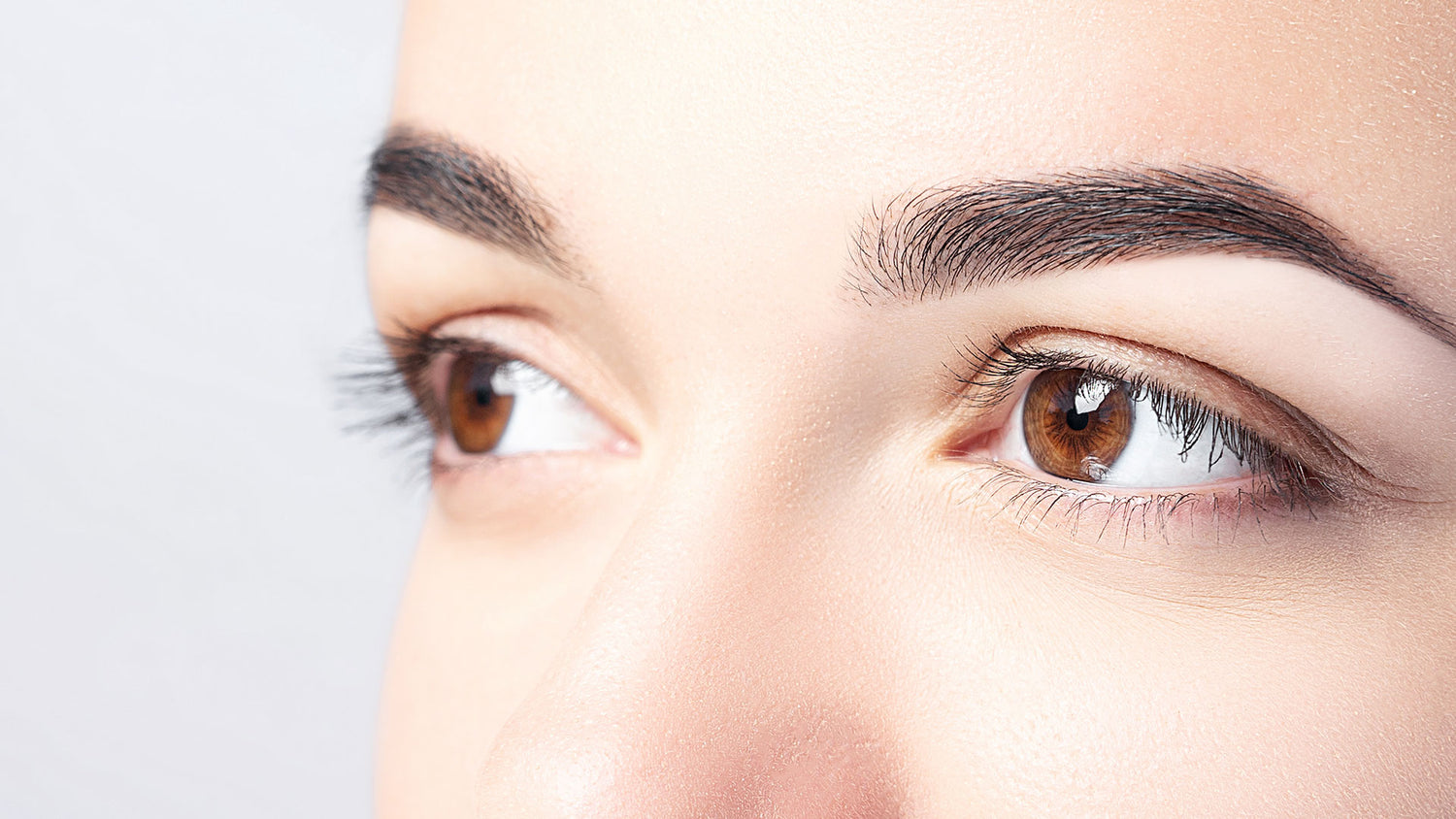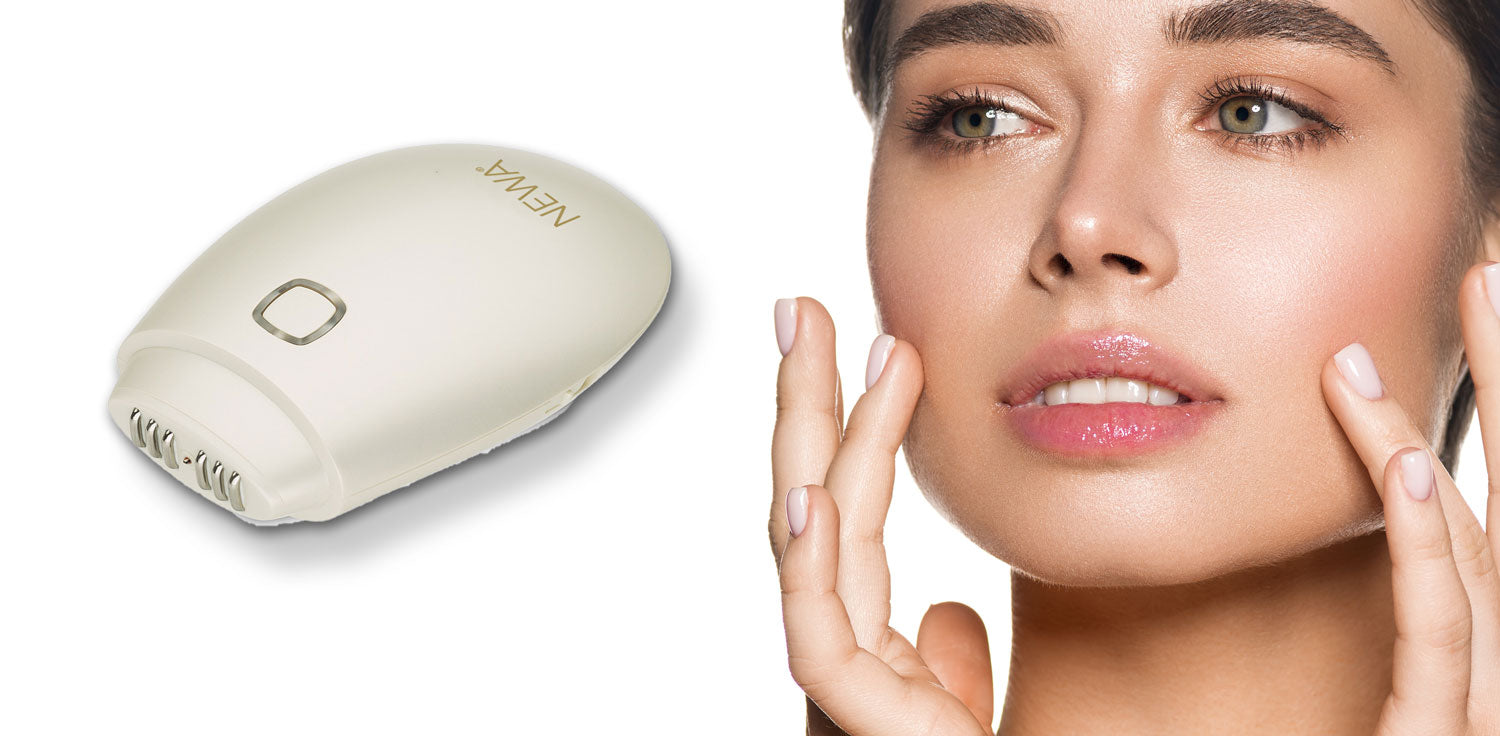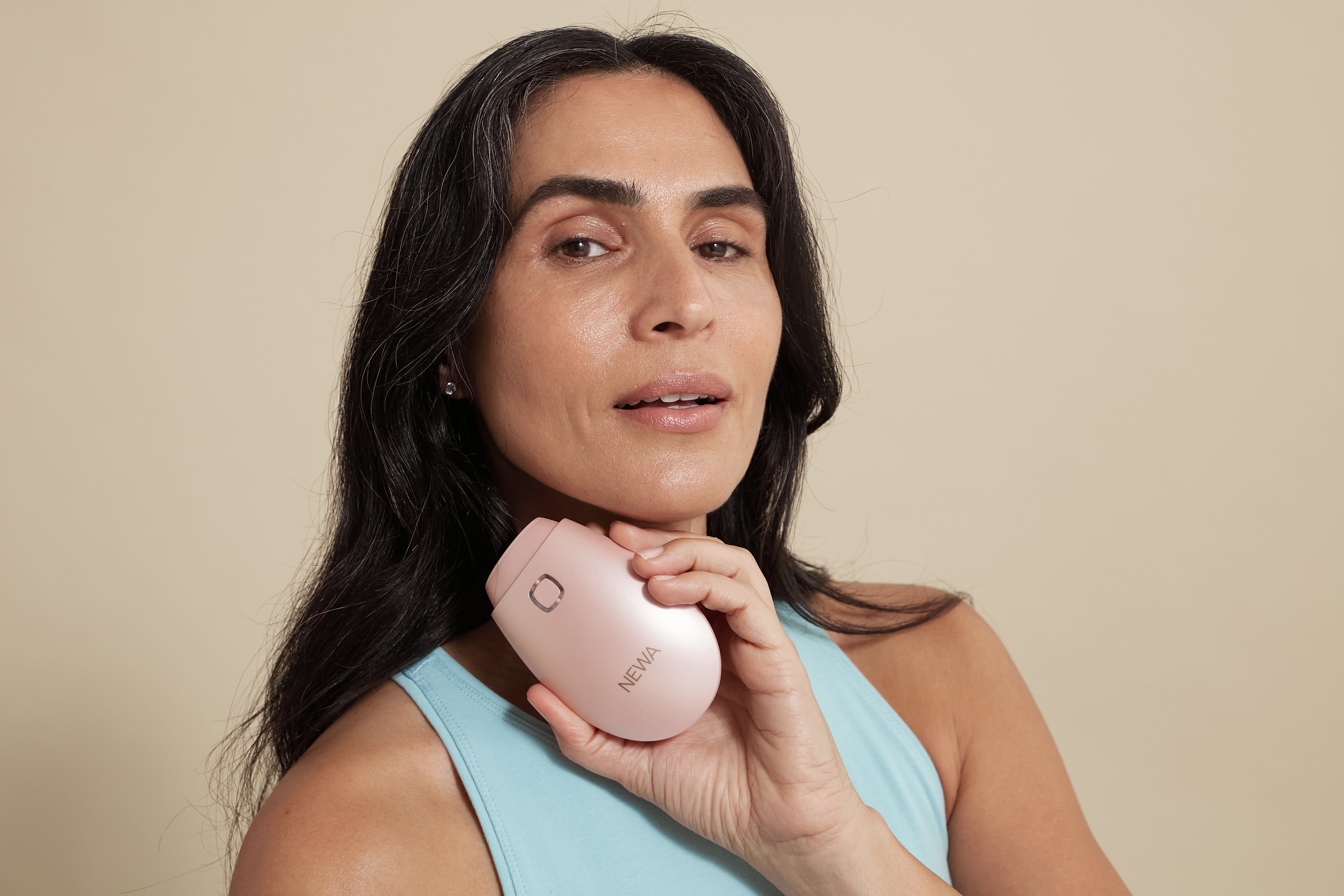We’re kicking off a new series here on the blog where we will be covering common skincare concerns and how to address them!
The most common skin concerns you’ve shared with us - from jowling, crow’s feet, nasolabial folds, and more - will be discussed.
Let’s delve into the anatomy, cause, and proven treatments so we can clear up any confusion and help ensure you’re not wasting time on miracle creams that
just won’t work.
First up, aging related concerns around the eye area.
Anatomy
Without even getting into the anatomy of the actual eye itself, the surrounding area still has its own complex anatomy.

Seven major bones of the face make up the orbit the bones that frame the eye sockets. The frontal bones of the forehead form the upper boundary, the zygomatic and maxilla bones form the sides and lower boundary, and then the rest of the bones form the back side of the sockets.
While there are no bones in the hollow of the eyes, we do have a large muscle that fills the space - called the orbicularis oculi. This circular muscle extends just past the orbit and is primarily responsible for opening and closing the eye.
Above the muscle, we have deep and superficial fat pads. The infraorbital fat pad lies just under the eye with the malar fat pad just below in the cheek area. And as we’ve discussed before, above that you’ll find the skin - the deeper dermis and then the more superficial epidermis.Concerns

The eye area in general is particularly prone to premature aging. The skin here is more delicate and is often under strain from environmental factors as well as mechanical stress from rubbing the eyes or sleeping on that side.
The circular muscle we discussed above - the orbicularis oculi - is constantly contracting as we blink and these repetitive muscle movements can cause dynamic wrinkles. This type of wrinkle is only noticeable when you make expressions but can become static wrinkles (the ones present even when your face is at rest (over time).
As we age, the fat pads in our face begin to lose volume and support. This begins first in the center of the face, particularly the fat pads that support the under eye and cheek. This can cause hollowing under the eyes and eye bags.
Lastly, the skin here is more delicate and more prone to aging. Often we don’t apply sunscreen as liberally as we should onto the eye lids especially. Skin around the eyes can start to thin, wrinkle, and show signs of hyperpigmentation from sun damage as a result.
To summarize, common skin concerns around the eyes are typically:
- hollowing due to volume loss
- eye bags due to herniation of fat pads
- fine lines and wrinkles (like crows feet)
- thinning skin and sun damage
Treatment

The eye area can be a very difficult area to treat due to the delicate skin there. Not all products are eye safe as well so you don’t want to put potentially irritating ingredients right on the eyelid. We’ll wrap up this blog post discussing what professional and home interventions can help.
Dynamic Wrinkles
Unfortunately, no home product or device is going to be able to stop muscle movement. If it’s something you’re comfortable with, Botox from an experienced injector will be the most effective way to address this concern.
If injectables aren’t your cup of tea, microcurrent may be able to help some as well as silicone patches and neurotransmitter inhibiting peptides like Argireline. They won’t erase dynamic wrinkles but may help some.
Hollowing and Eye Bags
Unfortunately, this too is best addressed in office. No topical or home treatment can address the facial fat pads. Fat transfer or dermal filler can restore the volume lost and refresh this area.
If you don’t wish to go the injectable route, you may be able to help make it less noticeable by thickening the skin there (retinoids, NEWA radio frequency, microneedling) and plumping the under eye area with hydration (hydrators, eye masks). Just keep expectations reasonable.
Thinning Skin and Static Wrinkles
Luckily, aging related changes to the skin can be addressed at home as long as you stick to what is research backed. Topically, retinoids are most proven. Just be sure to apply moisturizer first as a buffer and only place the tretinoin along the orbit so it doesn’t get into the eyes or cause excess irritation and dryness.
This blog is not meant to diagnose or treat. Always see a professional to discuss your specific concerns and treatment options if possible.
Like this blog? Stay tuned as we cover other concerns like jowling and nasolabial folds. Keep up with us in the meantime on Instagram and our Facebook community.




